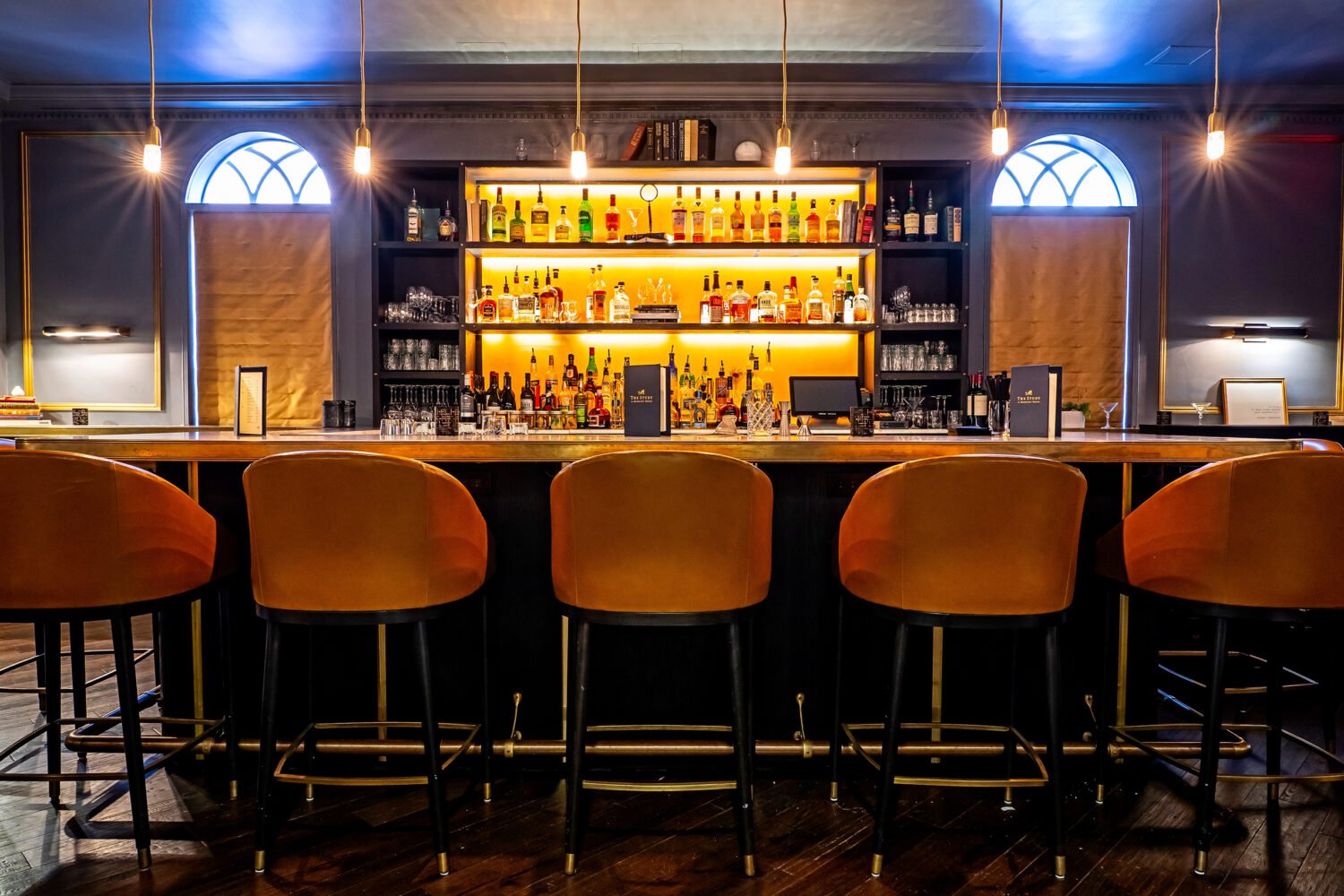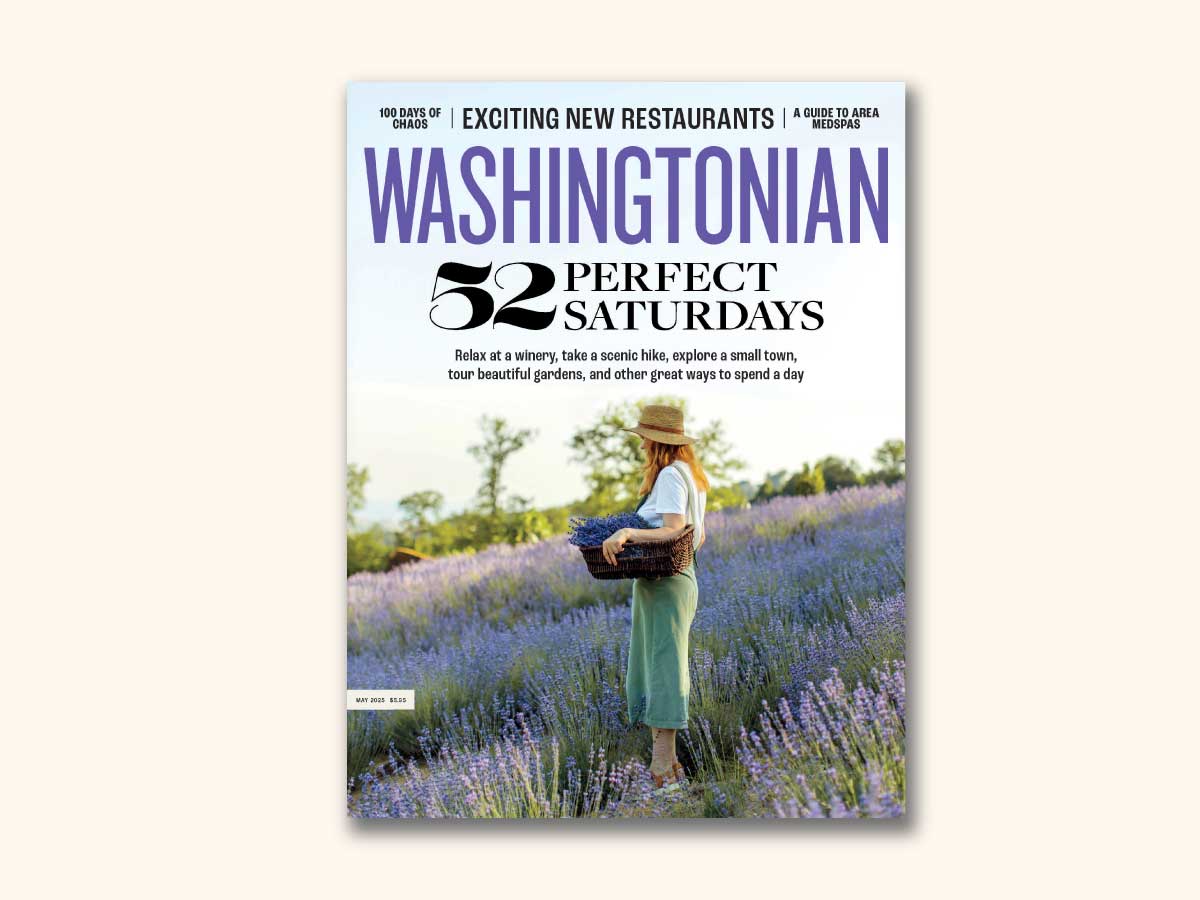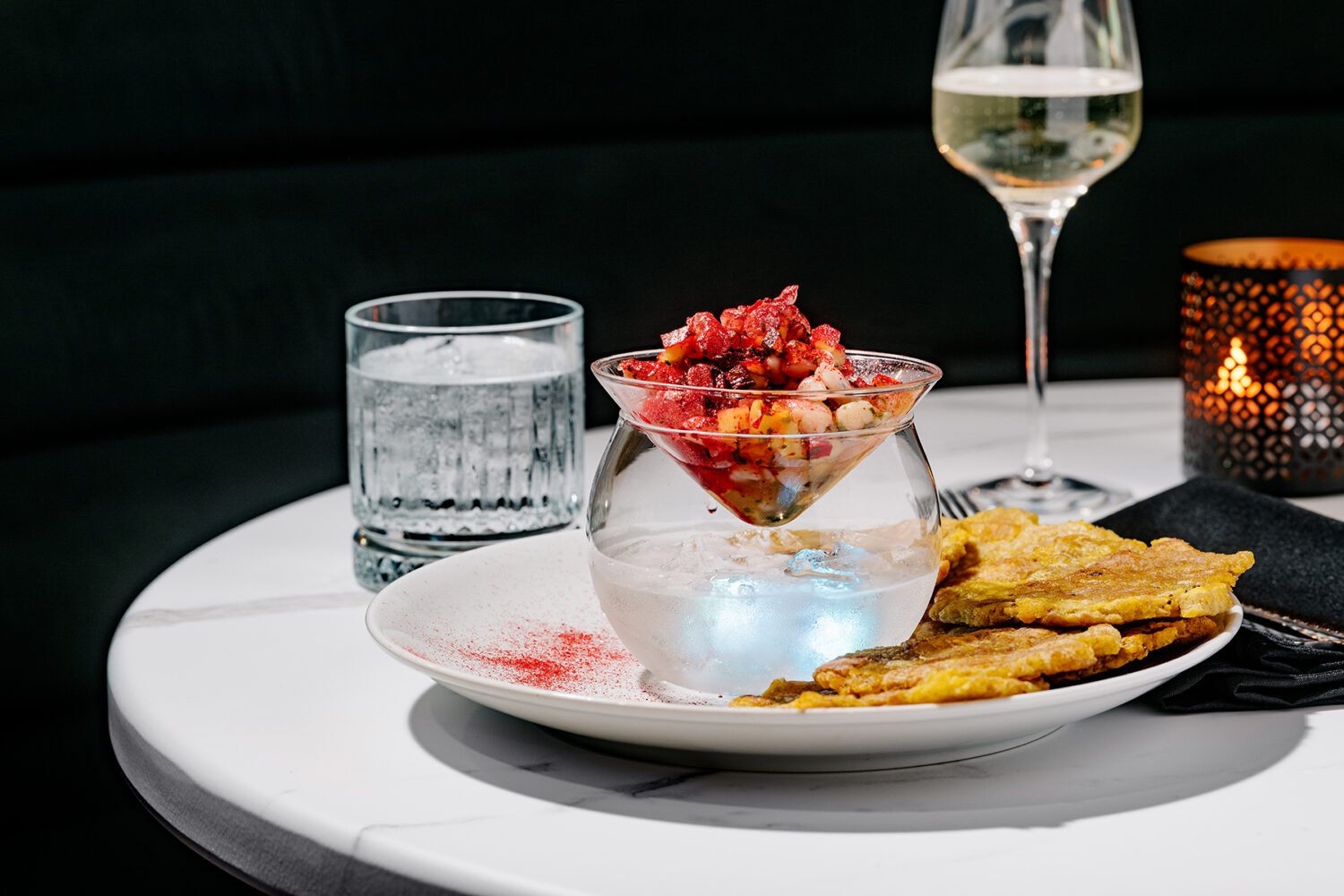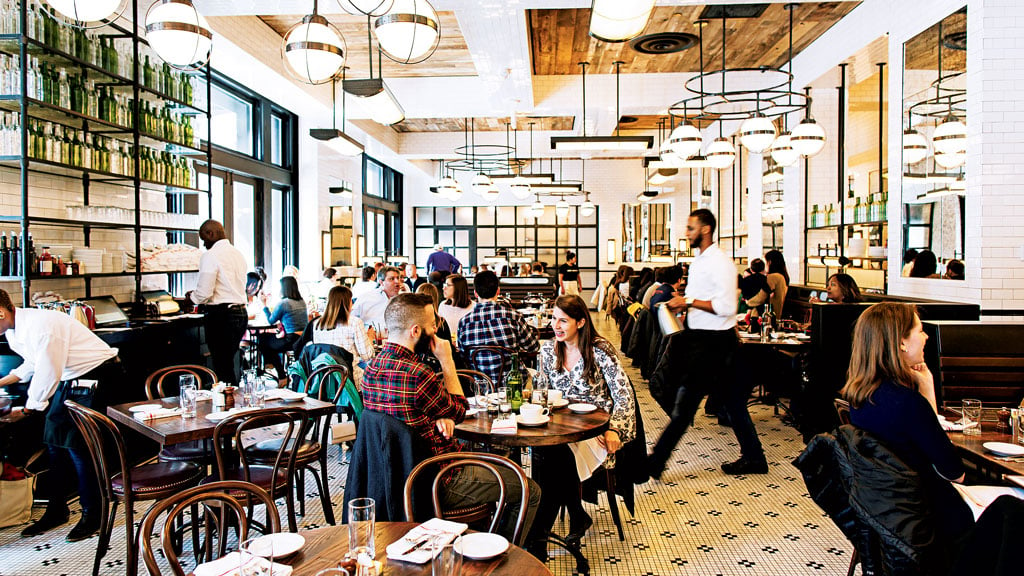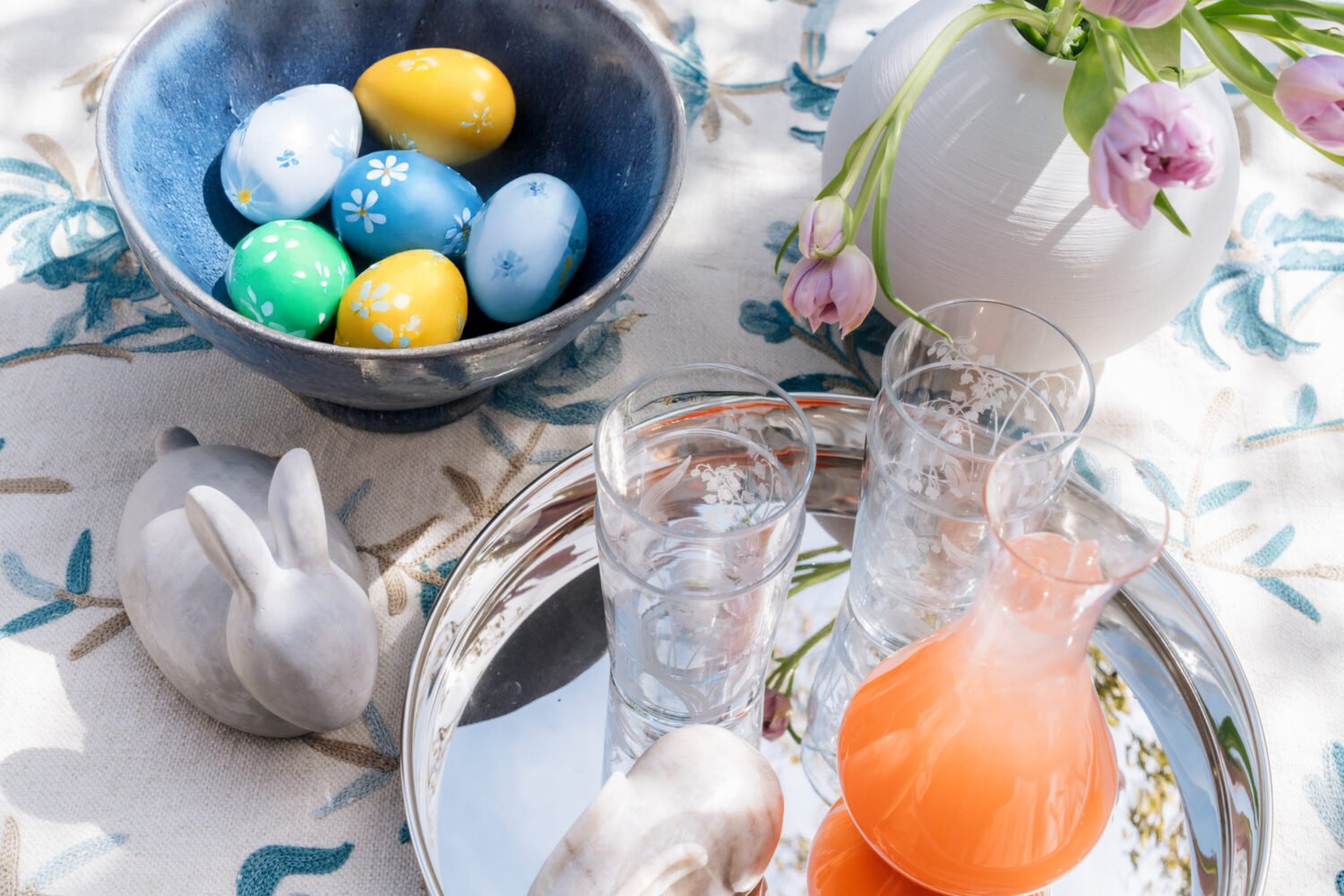>>For a photo slideshow of Mala Tang, click here.
In pop music and theater, collaborations between artists of the First and Third Worlds have flourished for decades—the smudging of cultural boundaries is one of the ways art trumps politics. But in food circles, such cross-cultural exchanges are rare, and when they do occur, the spirit that prevails is often less that of collaboration than of co-optation. Wolfgang Puck and Rick Bayless have been so successful with their upscale interpretations of Asian and Mexican cooking that they’re regarded not as ambassadors but as spokesmen. A new PBS series devoted to the glories of Korean food is heralded as a breakthrough for a neglected cuisine, but it’s a French chef, Jean-Georges Vongerichten, who hosts.
Closer to home, chefs have been experimenting with Vietnamese pho and bánh mì on their menus, but these adopted flavors are seldom integrated into the repertoire and tend to come across as dilettantish dabbling.
The new Mala Tang in Arlington is an anomaly in this context, which is one of the things that make it such a welcome arrival.
The restaurant centers around the Szechuan hot-pot experience and is the partnership of chef Liu Chaosheng and brothers Oren and Tomer Molovinsky. Liu, a Chengdu native, owns and operates Hong Kong Palace and Uncle Liu’s Hot Pot in Falls Church and China Jade in Rockville—three of the area’s premier destinations for Szechuan cooking. Oren Molovinsky is a managing partner of the company that owns the happy-hour haunt Harry’s Tap Room in Arlington and prior to that was a manager at the trendy restaurant/lounge Mie N Yu in Georgetown.
The first surprise is that the Molovinskys aren’t playing Colonel Parker to Liu’s Elvis. This is an equal partnership, a true give and take, and thus a more genuine collaboration than the Westernized gloss on a native cuisine that tends to result when—as bigtime chefs like to say—East meets West.
Collaboration is a delicate dance—as artists (and spouses) learn, you have to know when to be supportive and when to stay out of the way.
The Molovinskys have given Liu a sumptuous setting and good raw materials to work with, and they’ve granted him autonomy in the kitchen. Liu, in turn, has largely stayed out of their way, entrusting the running of the operation to their clubby sensibilities and transforming the dishes of his native land into bistro-ready comestibles.
The biggest challenge was to Westernize the hot-pot meal without sacrificing its essential character. Like fondue, with which it shares traits—cooking meat and veggies in a pot of boiling broth, skimming them in a finishing sauce—hot pot is a communal meal that proceeds with the leisureliness of afternoon tea, so the challenge was formidable. Americans tend to disdain the communal table.
Rather than build the operation around the notion of the single-pot meal, the partners settled on selling diners individual pots with a choice of broth (mild or spicy) heated by a flame that sets the tiny pink goji berries roiling. Diners customize the pots with their choice of meat, fish, and vegetables.
There are obvious benefits for management to this one-person/one-pot approach—for one thing, it’s a lure for the lunch crowd: Young professionals too harried to linger over a shared meal can get in and out. It also maximizes returns: Why sell one pot when you can sell two?
The effect, however, is to turn a free-for-all of an experience into something more subdued. Uncle Liu’s, where Asians make up most of the diners, has the energy of a subway stop at rush hour. Mala Tang is the inverse, with Westerners in lacquered-wood seats, designer plates on the tables, moody techno on the sound system, ruby-red paint on the walls, and an air of restraint—the hot-pot restaurant as cool bistro.
I confess to feeling skeptical when I first walked in, and again when the waitress made it clear that sharing a hot pot was frowned upon and that my wife and I would be expected to order a pot each. I began to think Mala Tang was one of those restaurants that relish being thought of as “high concept”—which is to say one that would turn out to be really promising or really pretentious.
But then the plates of meat, fish, and veggies hit the table, and the benefits of the collaboration became obvious.
I opted that afternoon for orders of pork and prawns. The prawns were fresh and beautifully peeled, while the pork was richly marbled and had the deep, resonant flavor of a heritage-breed pork chop. We alternated swiping the slices through the dipping sauce—a house-brewed soy sauce dressed up with spicy bean paste, chili peppers, and the kitchen’s own barbecue sauce—and eating them plain.
Another night, our waitress talked us into the red-wine-soaked slices of beef, which we augmented with orders of calamari, wood-ear mushrooms, and green-bean leaves. (We made do with just the one pot for the two of us. Unless you feel that your food needs room to float while it cooks, you should, too.)
This time, the meat proved to be more show than substance—the waitress poured a glass of wine to soak the fan of beef, which disintegrated after several minutes in the boil. The calamari were as glisteningly fresh as if they’d been plucked from the water that morning. Tender at the start, they were even more so after 15 minutes; in between, they were as tough as erasers, which is true of calamari generally—it’s either a quick-fry or a long-cook dish, with little in the way of a middle ground.
The vegetables were the greater reward. Wood-ear mushrooms resemble nothing so much as bat ears when raw; after brewing for ten minutes or so in the spicy broth, their cartilaginous chewiness softened into an appealing crunch. The green-bean leaves were even better, retaining both their color and their structure even after a long hot dunk. In both cases, the chili-fired broth added heat to texture and transformed the mild flavors into something memorable.
Hot pot is participatory dining, and it succeeds best when both diner and staff are on top of the meal. The servers are willing but could stand more drilling in the restaurant’s mission. The pork needed only a few swishes in the broth to cook, but the waitress advised us to leave the meat alone for ten minutes, which, had we listened, would have transformed its luscious texture into something akin to licorice.
Hot pot isn’t the only reason to come. It might not even be the best reason.
The first couple of pages of Chef Liu’s menu are devoted to the boldly flavored street foods of Chengdu. They’re billed as appetizers, but there are enough of them—and enough variety—to make a meal.
A small dish of wood-ear mushrooms tossed with chopped cilantro brilliantly illustrated the paradox of simple complexity. The pork dumplings—delicately fashioned with thin, pliant skins—and the dan-dannoodles, topped with a zesty meat sauce, were just as good.
A green-onion pancake was rendered into tiny triangles that were gloriously free of the slick of oil that sometimes builds up on snacks after frying; they almost crunched like chips. Only a plate of lightly pickled cucumbers missed, and not by much—they tasted more of sesame oil than vinegar.
In art and business there are collaborations that sound fated but fail, and collaborations that scream of gimmickry yet somehow succeed. I had pegged Mala Tang for a marriage of convenience, but there’s a surprisingly sturdy foundation here. Liu and the brothers Molovinsky may not be soulmates, and it’s too early to tell if they’re destined for the long haul, but they clearly are good for one another.
This article appears in the August 2011 issue of The Washingtonian.


